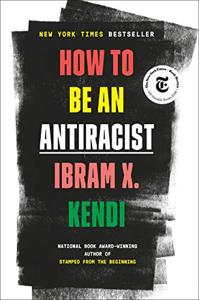
Want to learn the ideas in How to Be an Antiracist better than ever? Read the world’s #1 book summary of How to Be an Antiracist by Ibram X. Kendi here.
Read a brief 1-Page Summary or watch video summaries curated by our expert team. Note: this book guide is not affiliated with or endorsed by the publisher or author, and we always encourage you to purchase and read the full book.
Video Summaries of How to Be an Antiracist
We’ve scoured the Internet for the very best videos on How to Be an Antiracist, from high-quality videos summaries to interviews or commentary by Ibram X. Kendi.
1-Page Summary of How to Be an Antiracist
Overview
In his book How to Be an Antiracist, Kendi uses his life story to demonstrate how racism can be overcome. Racism cannot simply be ignored or not dealt with; it must be actively fought against and eliminated. This is the only way for society to move forward in a positive direction.
In the introduction, Kendi discusses how he used to believe that Black people were responsible for their own problems. However, now he knows that racism must be eradicated and encourages readers to remember that racist and antiracist are not permanent states of being but rather positions we can occupy interchangeably.
In his book, “Definitions,” Kendi talks about how he defines different terms related to race and racism. He provides statistics that show how people of color are often at a disadvantage in many aspects of life in America.
In this essay, the author mentions W.E.B. Du Bois numerous times and explains his “double consciousness” theory from Souls of Black Folks. The author espouses these views as he was growing up but now sees them as wrong.
In the book “Power,” Kendi explores how racist ideas were created to support self-interested policy. He explains that race as a category was invented after policies were put in place and not the other way around. There is no scientific category of Black because race is a construct, but we all live out what our assigned race usually manifests.
In the “Biology” chapter, Kendi compares two perspectives. The first is segregationist; it believes that Blacks are inferior to Whites and should be kept separate from them. The second perspective is assimilationist; it thinks that Blacks can assimilate into White society. There’s no scientific proof for race because 99.9% of people have the same DNA material in their bodies.
In “Ethnicity”, the reasons why ethnic racism exists are explored. Slavers created ideas about which Africans were superior or inferior, and these ideas spread into society, causing ethnic tensions between Black immigrants and African Americans. The reality is that all of these beliefs are fueled by American White racists.
In “Body,” Kendi refutes the idea that Black bodies are more violent, sexual, and dangerous than White bodies. He argues that it has to do with lack of opportunity for all racial groups instead of being a result of Blackness. Lack of opportunity results in more violence; not because they’re Black but because they don’t have opportunities. Tough-on-crime policies or paternalism aren’t helpful either—only higher paying jobs will help solve these problems.
In this chapter, the author discusses how Whites criticize Black culture and steal from it. He also talks about how Blacks can attach value to certain aspects of their culture and marginalize each other. Finally, he explains that antiracism means acknowledging that all cultures are different at the same level.
In “Color,” Kendi looks at the prejudice faced by Black people with different skin colors. Light-skinned Blacks are considered more attractive and have more opportunities than Dark-skinned Blacks. People who are discriminated against often resent those who don’t face discrimination.
In this article, the author talks about how he used to demonize White people; now, he knows that’s racist. Ordinary White people are different from racist policymakers and should be treated differently.
In “Black,” Kendi finally started to overcome some of the racist ideas he had about Black people. He pointed out that poorer Blacks are looked down upon by other Blacks just as much as Whites look down on all Black people. Furthermore, it is a problem for someone to assume that all Black people are weak because there are powerful black individuals who can also cause harm to the black race.





